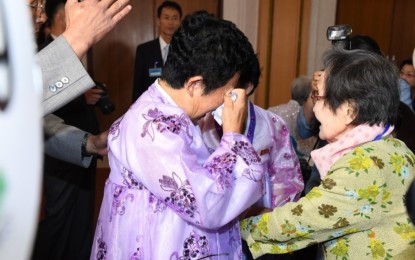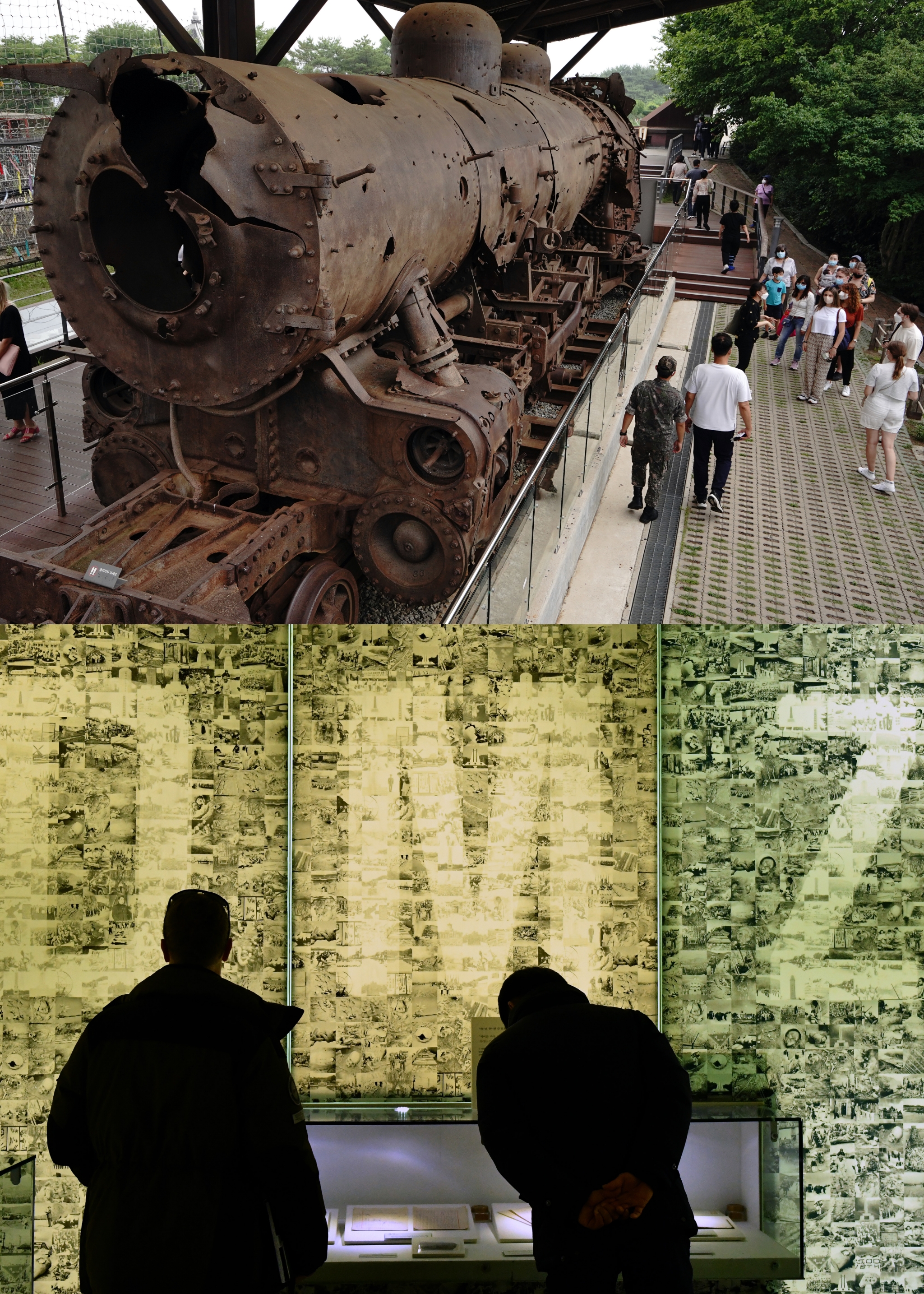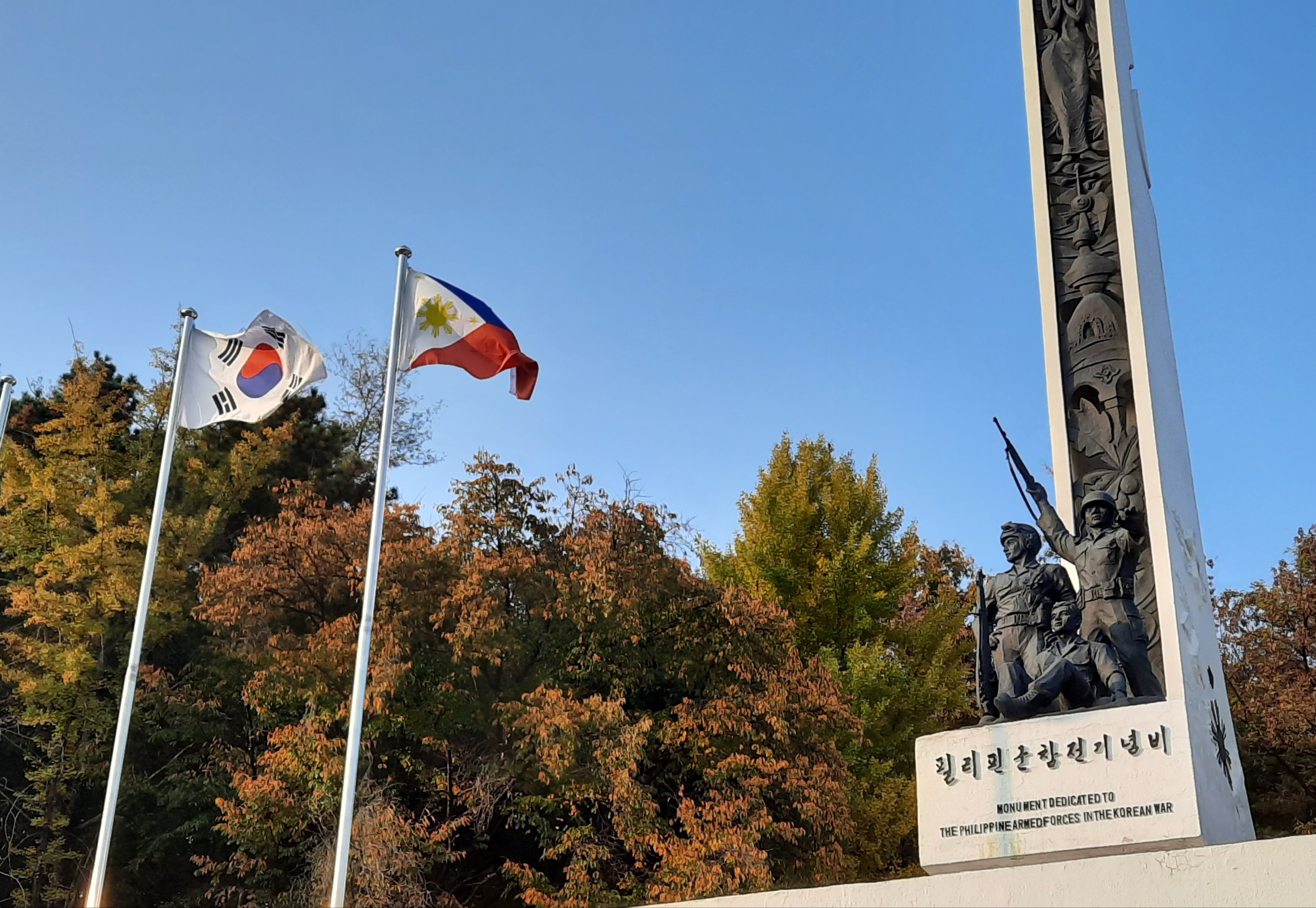
TEARFUL REUNION. Individuals in their twilight years get reunited with their relatives in the last face-to-face reunion between separated families in 2018. Contact between the two Koreas remains highly restricted, making it difficult for Seoul to find out the living conditions of those in the North or even simply to confirm whether they are dead or alive. (Photo courtesy of the Ministry of Unification)
SEOUL, South Korea – Over 70 years have passed but for a number of families who fled the chaos during the Korean War, the wound from the past still runs deep.
For elderly Kang Ok-nyeo, one of the thousands who got separated with a family member when the war broke out in 1950, her one wish is to meet her three siblings from North Korea.
"Geum-nyeo, Suk-nyeo, Bok-hee I really miss you, before I die, my last wish is to meet and see you. I hope you are healthy," she said in a "video message" posted at the Ministry of Unification in April 2022.
Kang's letter is just one of the many clips aging daughters and sons are leaving on cyberspace in the hopes that their parents and siblings could one day see.

Contact between the two Koreas remains highly restricted, making it difficult for Seoul to find out the living conditions of those in the North or even simply to confirm whether they are dead or alive.
With a now aging population, time for these divided families is running out.
The Ministry of Unification said there were roughly five million war-displaced Koreans from the North in the 1950s, which dramatically went down to 700,000 in 2005.
State-supported meet-ups, given the space a site could hold, select participants via lottery. To date, there have only been 28 reunions organized between Seoul and Pyongyang, with the last face-to-face meeting held in 2018.
Since applications were opened in 1988, more than 133,000 family members have registered to participate in any possible reunion.
Of this figure, the ministry said 87,404 have already passed away leaving only more than 40,000 survivors to date, majority of whom are age 80 and above.
'International support'
The ministry, which oversees relations with the North, hoped this "urgent issue" could garner more support and interest from the international community.
"[T]his issue is also a human rights issue and humanitarian issue so I like to ask for more support and interest from the international community," a ministry official who requested anonymity said in a recent interview with the Philippine News Agency (PNA).
On top of the challenges posed by the pandemic, the official said North Korea had been unresponsive to Seoul's call to revive discussions in the wake of the latter's military drills with the United States.

Korea Institute for National Unification (KINU) senior research fellow Lee Kyu-Chang said at least 82 percent of the surviving separated families don't know whether their kin in the North is alive.
"We have a lot more dead people than the survivors and these are just the number of those who are registered," he told the PNA. "In five years time these people probably would be gone."
Separation among families is among the many complex issues the war has left unresolved.
Decades since the ceasefire took place in 1953, division between the two Koreas had no doubt grown deeper.
But Seoul continues to pin hope on a one "unified" Korean Peninsula.
'Safer, peaceful region'
Beyond healing mental wounds and ensuring prosperity for both sides, Lee said "unification" would also bring about a "safer and peaceful" region.
With the North's unabated pursuit of a nuclear weapons program, the region remains a potential dangerous flashpoint for conflict.
The Democratic People's Republic of Korea earlier fired a presumed intercontinental ballistic missile with a reported range that can reach mainland United States, continuing a flurry of weapons test over the past weeks.
"At the moment the Korean Peninsula is the region with the highest threat of war and highest risk of war in the world. If Korea's unified then the region would be safer and it's going to have more peace and security," Lee said.
"The vision of the new Yoon Suk-yeol government is becoming a hub country in the international community. He wants North Korea to give up on denuclearization and become part of the peace process," he added.

But how can the two Koreas, split for more than seven decades, become one again?
Lee said it could start by gradually bridging the gap between its two people and eventually creating economic and cultural communities to integrate two different societies into one.
"I think the biggest block is the hostility of people to each other because we had the Korean War and at that time, we saw members of our family get killed by North Korean soldiers and the opposite side," he shared.
"If we have more communication and exchanges with them, that would lessen that hostility among people," he added.
Ultimately, a peace treaty must be signed.
"We need to move into a peaceful system and then reunification can happen," Lee said.
'Technically ongoing war'
North Korean forces invaded South Korea in June 1950, prompting the formation of the United Nations Command (UNC).
At least 22 states supported the South, including Manila that sent a total of 7,420 Filipino soldiers under the Philippine Expeditionary Force to Korea (PEFTOK).
When the Korean Armistice Agreement was signed in July 1953, the hostilities that killed millions of civilians were suspended and the 241-kilometer long demilitarized zone (DMZ) was formed.

The Philippine contingent served under the UNC until 1955 and suffered 116 killed in action, 99 wounded, and 57 missing.
But with no official peace agreement, South and North Korea today are technically still in a state of war. (PNA)
